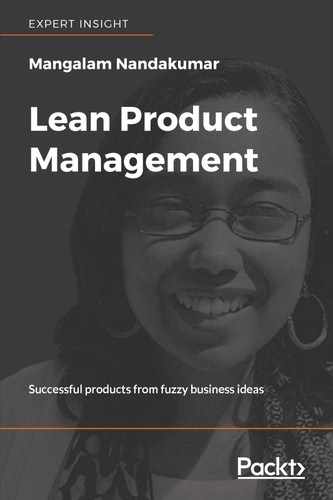Book Description
A guide to product management exploring the best practices: identifying the impact-driven product, planning for success, setting up and measuring time-bound metrics, and developing a lean product roadmap.
About This Book- Identifying Impact-Driven Products
- Investing in Key Business Outcomes
- Value mapping to maintain a lean product backlog
- Utilizing time-bound product metrics
- Eliminating process waste
If you are leading a team that is building a new product, then this book is for you. The book is targeted at product managers, functional leads in enterprises, business sponsors venturing into new product offerings, product development teams, and start-up founders.
What You Will Learn- How do you execute ideas that matter?
- How can you define the right success metrics?
- How can you plan for product success?
- How do you capture qualitative and quantitative insights about the product?
- How do you know whether your product aligns to desired business goals?
- What processes are slowing you down?
Lean Product Management is about finding the smartest way to build an Impact Driven Product that can deliver value to customers and meet business outcomes when operating under internal and external constraints. Author, Mangalam Nandakumar, is a product management expert, with over 17 years of experience in the field.
Businesses today are competing to innovate. Cost is no longer the constraint, execution is. It is essential for any business to harness whatever competitive advantage they can, and it is absolutely vital to deliver the best customer experience possible. The opportunities for creating impact are there, but product managers have to improvise on their strategy every day in order to capitalize on them. This is the Agile battleground, where you need to stay Lean and be able to respond to abstract feedback from an ever shifting market. This is where Lean Product Management will help you thrive.
Lean Product Management is an essential guide for product managers, and to anyone embarking on a new product development. Mangalam Nandakumar will help you to align your product strategy with business outcomes and customer impact. She introduces the concept of investing in Key Business Outcomes as part of the product strategy in order to provide an objective metric about which product idea and strategy to pursue. You will learn how to create impactful end-to-end product experiences by engaging stakeholders and reacting to external feedback.
Style and approachThe first few chapters of Lean Product Management address how to arrive at a product road map. It guides you through the process of getting stakeholder buy-in, prioritizing Key Business Outcomes and identifying the Impact-Driven Product, and arriving at a Cost-Impact matrix through value mapping. The next few chapters address how to define time-bound success metrics. It guides you through the process of creating an end-to-end product experience, capturing qualitative and quantitative insights to track product performance and alignment to short and long term product strategy. The last set of chapters of the book address process bottlenecks that hold teams back from building products right and how to eliminate process waste.
